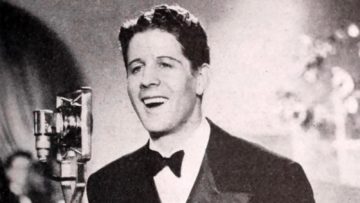Zaria Gorvett in BBC:
 There was hysteria in the air at 81st Street Theatre in New York. Deep within the building, behind its white neoclassical arches and away from the steady chatter of crowds of adoring fans outside, a new kind of celebrity singer was walking onto a black-and-silver stage. It was February 1929, and just a few months earlier, Rudy Vallée had been an obscure graduate best known to the listeners of WABC radio in New York. He wasn’t considered particularly good looking: one biting critic later called him “a young man whose eyes are too close together and small to be called handsome“. His singing style, too, was highly unusual.
There was hysteria in the air at 81st Street Theatre in New York. Deep within the building, behind its white neoclassical arches and away from the steady chatter of crowds of adoring fans outside, a new kind of celebrity singer was walking onto a black-and-silver stage. It was February 1929, and just a few months earlier, Rudy Vallée had been an obscure graduate best known to the listeners of WABC radio in New York. He wasn’t considered particularly good looking: one biting critic later called him “a young man whose eyes are too close together and small to be called handsome“. His singing style, too, was highly unusual.
But that night, as Vallée began the opening lines of a characteristically sentimental song, the crowd exploded with rapturous applause. The venue had achieved record-breaking sales, mostly with women: so many had turned up, the police had to be called to contain them. His was no longer just a voice for radio.
As it happens, the evening did more than catapult Vallée to global stardom. The singer was one of the first singers to practice the art of “crooning”. This new style was a kind of soft, intimate singing, often likened more to lullabies than to the belting operatic or classical performances audiences were used to in the early 20th Century. Today the term is less well-known, but the style is still as popular as ever. In fact, this was the birth of modern singing as we know it.
More here.
